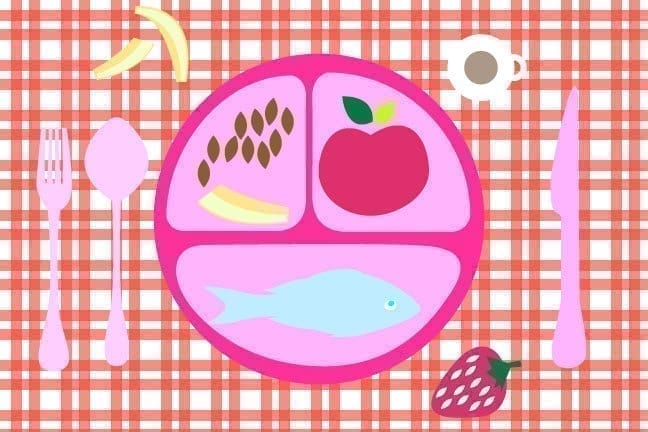There are days when keeping up with emails, dishes, laundry and my boisterous 2-year-old daughter leave me completely drained. Like every day. I’ve tried going to bed earlier, managing my time better and even grabbing an afternoon nap when my kid takes hers, but nothing has upped my energy. So I asked Elisa Zied, R.D., author of “Younger Next Week: Your Ultimate Rx to Reverse the Clock, Boost Energy and Look and Feel Younger in 7 Days,” to help me put together an eating plan to maximize my energy throughout the busy day.
Zied gave me a general rule to follow: Focus on eating more protein-rich foods during the day when I need the most energy and to fill me up, and carbohydrate-rich foods by night to provide a steady stream of serotonin, a neurotransmitter that plays a role in mood, appetite and sleep. By eating more balanced meals and snacks throughout the day, I could keep my energy levels steady—as opposed to the old spike-and-crash routine I’ve been used to.
Here’s Zied’s energy-boosting meal plan:
Breakfast:
6-8 a.m.: Scrambled eggs with whole wheat toast, ½ cup fruit of choice, such as blueberries, strawberries, cherries or ½ banana, and coffee with non-fat milk and low- or no-calorie sweetener
Why it works: “The eggs satisfy with high quality protein, while the whole wheat toast and fruit provide fiber and carbohydrates,” says Zied. “Fiber is filling and carbohydrates are the key source of energy needed by the brain, red blood cells and entire central nervous system as well as muscles.”
More breakfast options: Non-fat plain yogurt topped with ½ cup fresh berries and 2 tablespoons of walnuts or almonds. Or try a whole grain cereal with nuts and fruit and non-fat milk.
Mid-Morning Snack:
9-11 a.m.: 1-2 tablespoons of nuts and ½ cup fruit, such as a small apple, clementine, kiwi, peach
Why it works: “The nuts provide protein and healthy fat, while the fruit adds the fiber and carbohydrate element,” says Zied. “This timing is good for a snack because it’s important to space out eating throughout the day to keep energy levels steady.”
More snack options: 5 Triscuit crackers and 1 ounce cheddar or 1 tablespoon of peanut butter and ½ cup fruit of choice—both snacks are rich in protein, healthy fat and fiber.
Lunch:
12-2 p.m.: Tuna canned in water with 2 teaspoons of mayo on top of a colorful salad with lots of vegetables such as carrots and tomatoes, plus 2-3 tablespoons of salad dressing and one small whole grain roll.
Why it works: “The tuna is a source of high quality protein, and the roll is a carbohydrate that adds fiber to the mix,” says Zied. “The veggies also provide fiber, plus tons of vitamins and minerals. Their high water content helps keeps you hydrated, too.”
More lunch options: Swap the tuna for a small piece of salmon or baked/broiled/grilled chicken or go for a turkey sandwich: 3 ounces of turkey on two slices of whole wheat bread with 2 teaspoons of mayonnaise, lettuce and tomato, plus one medium apple.
Afternoon snack:
3-5 p.m.: Craving salt? Try ½ cup of Smartfood Popcorn. For a sweet tooth: 3 small squares of dark chocolate. A tip: Before you eat your treat, have a tablespoon of almonds or a small piece of fruit.
Why it works: Zied calls this snack the “treat” of the day and it clocks in at 50-100 calories. “Pairing the treat with a nutrient-rich food first will fill you up a little so that you keep the treat portion small,” she says.
More treat options: Sweet: 8 ounces of low-fat chocolate milk, two Hershey’s Kisses or one small chocolate chip cookie. Salty: 20 Popchips, six Ritz crackers or eight Cheez-Its.
Dinner:
6-8 p.m.: Chicken vegetable stir-fry with 3 ounces of skinless lean chicken breast and 1½ cups mixed vegetables, such as broccoli, zucchini, yellow squash, green pepper and onion sautéed in 2 teaspoons of canola oil, followed by 2 tablespoons of hoisin sauce. Pair with 1 cup cooked brown rice.
Why it works: The lean protein—chicken—fills you up while the vegetables keep you hydrated and provide fiber. The whole grain rice is the carbohydrate that gives energy.
More options: Shrimp pasta with 1 cup whole wheat penne, 4 ounces steamed shrimp, 1 cup eggplant and tomato sautéed in 2 teaspoons olive oil, plus 2 tablespoons grated Parmesan cheese.
Zied doesn’t recommend a before-bed snack, also known as dessert—see how she sneakily tucked a potential sweet treat into the afternoon hours? “I like to encourage people to be daytime eaters since they’re most active by day and less active by night,” she says. “Eating late at night or having a big meal can make it tougher to get high quality sleep and that can definitely impact you the next day.”
This plan, which is explained and expanded with recipes in her book, is about 1,600 calories a day and is crafted to be satisfying and keep you feeling strong and energized.
As for me? The mid-morning snack was a big revelation—I was powering straight from breakfast to lunch and my energy flagged terribly in between, but just a handful of nuts and some fruit, which are easy to carry with me if I’m on the go, kept me much more active and less hungry before lunchtime. I never got to the point where I was depleted of energy during the day, so I was always making better choices. Having the small sweet or salty treat in the afternoon, as opposed to after dinner, made me feel satisfied and less anxious at bedtime. Though I would have a cup of herbal tea after dinner sometimes, just to address that “eat something” craving, which Zied said was OK.
Overall, my eating day has a better flow to it, and my energy feels less like a rise-and-crash chart and more like a strong, steady line.




































